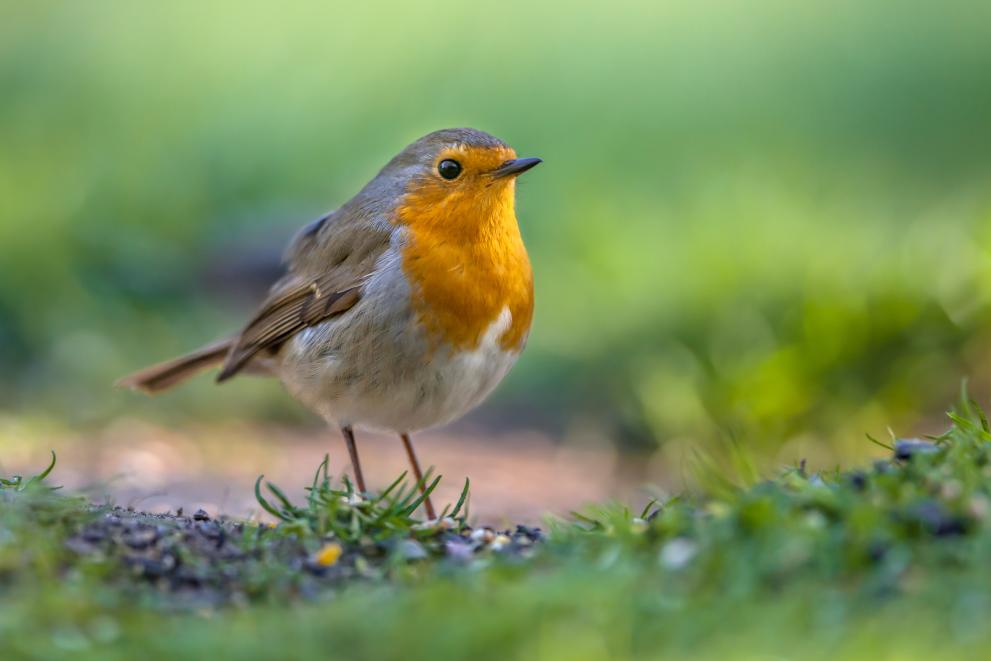
This study uses a large data set to model changes in the ecological roles performed by bird species in ecosystems around the world. The researchers report that forecast changes in ecological function vary across geographic areas. They suggest possible implications of these findings for future provision of ecosystem services.
Climate change is already altering the distribution of wild species and this effect is expected to become more pronounced as global temperature rises. These range shifts are likely to lead to changes in species assemblages – the set of species found in a given ecosystem. Studies on this phenomenon have typically focused on the property of species richness – the total number of species – however this metric does not reflect the degree to which individual species have been replaced with others, or broader issues affecting the integrity of the ecosystem.
This study focused on the property of functional diversity – the overall range of functions or roles performed by the species in an ecosystem – to explore how changes in species’ range could affect ecosystem services and stability. Reduced functional diversity is likely to indicate a less resilient ecosystem and may inhibit key ecosystem services such as carbon storage or suppression of pest species.
The researchers used a dataset comprising 8 268 species of landbird (birds that rely primarily on land habitats), mapping their distributions across 65 521 terrestrial grid cells of 0.5° latitude by 0.5° longitude. They used eight characteristics from the database, relating to beak shape, body shape and body size, to characterise the functional niche of each species (i.e. the way that it interacts with the environment) and hence quantify the functional diversity of all bird species within each grid cell. Then they projected the range of each species in 2050 under representative concentration pathway (RCP) 6.0 (a moderate-to-high greenhouse gas emission scenario adopted by the IPCC) and calculated the change in functional diversity within each grid cell.
The researchers report a general pattern of increased functional diversity in higher latitudes and reduced diversity in mid-latitudes, with a more complex pattern of changes projected for tropical areas. Changes in functional diversity were often more extreme than those predicted from changes in species richness, they say, with reductions, in particular, more than 50% greater than suggested by species richness values in many cases. This suggests that these reductions were primarily driven by a loss of especially distinct species, with potentially unique functional roles, say the researchers. Repeating the analysis with a lower emissions scenario (RCP2.6) produced comparable results, according to the researchers, with similar patterns emerging but to a lesser degree.
The researchers also considered changes relating specifically to fruit-eating and invertebrate-eating species. They say that changes in functional diversity of fruit-eating species (which predominantly occur in tropical areas) did not show a clear geographical trend, but that reduced diversity was more pronounced in Central and South America, New Guinea and Eastern Australia. They suggest that these areas may, therefore, experience impaired seed dispersal, which could impact on forest structure, rates of recolonisation and adaptation to climate change. Invertebrate-eating species, they say, followed the same pattern as the overall data set, with significant reductions in functional diversity in mid-latitudes. They suggest that these areas may, therefore, experience an increase in invertebrate populations that could reduce plant productivity due to leaf predation and reduce agricultural yield due to prevalence of pest species.
The researchers acknowledge several limitations to their study, in particular the omission of certain climatic and non-climatic variables in the modelling process, the low geographic detail (with some grid cells covering over 3 000 square kilometers) and the use of species-distribution models that do not account for interactions between species. However, they argue that such models are important to understand the potential implications of species-range shifts under climate change for purposes of planning and prioritising policy responses. They suggest that it would be useful to compare data on the response to climate change from invertebrates and fruiting plants – to better predict the impact on ecosystem functions. They also highlight the value of using detailed data on physical attributes to characterise functional properties of different species and the structure of future bird assemblages.
Source:
Stewart, P.S., Voskamp, A., Santini, L., Biber, M.F., Devenish, A.J.M., Hof, C., Willis, S.G., and Tobias J.A. (2022) Global impacts of climate change on avian functional diversity. Ecology Letters 25: 673–685.
To cite this article/service:
“Science for Environment Policy”: European Commission DG Environment News Alert Service, edited by the Science Communication Unit, The University of the West of England, Bristol.
Notes on content:
The contents and views included in Science for Environment Policy are based on independent, peer reviewed research and do not necessarily reflect the position of the European Commission. Please note that this article is a summary of only one study. Other studies may come to other conclusions.
Details
- Publication date
- 12 October 2022
- Author
- Directorate-General for Environment

